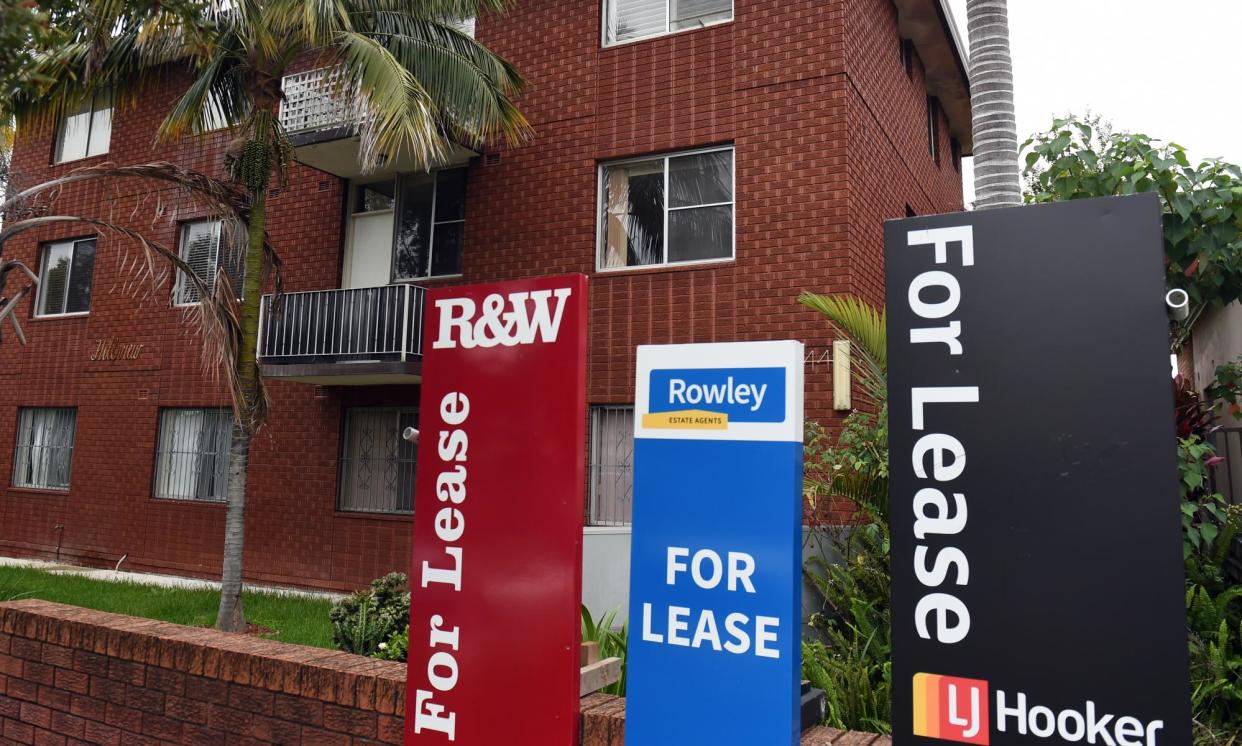Australian capital city rents have biggest monthly fall in over four years but crisis ‘far from over’

Average asking rents in Australia’s capital cities fell 0.5% in May, the largest percentage monthly decline in more than four years.
New data released by SQM property research shows the fall in average capital city rents – to $723 in May – was the largest monthly percentage decline on that measure since April 2020.
Median figures showed rents in Sydney fell by 1.1% to $844 a week in the 30 days to 4 June, while Melbourne’s asking rents remained stable during that period at $635 a week.
The largest monthly decline was in Darwin where rents fell by 6.3% to $566 a week. Adelaide experienced the largest rise, with rents up 2.1% to $593 a week.
SQM found the national median rent for a dwelling was $624 a week. Sydney still has the highest weekly rent for a house, at $1,050.
The national vacancy rate increased from 1.1% in April to 1.2% in May. Sydney and Melbourne also experienced increases in the number of houses available, with the vacancy rates rising to 1.4% and 1.3%, respectively.
SQM managing director, Louis Christopher, said the research group had “recorded an easing in rental vacancy rates for May, but the rental crisis is still far from over at this stage”.
“Vacancy rates are set to rise somewhat into winter,” he said. “This is the normal seasonality we get at this time of year so one should be a little careful about reading [too much] into these rises. Nevertheless, it might provide some minor relief to tenants who still have excessive difficulties in finding longer-term rental accommodation around the country.
“The full year outlook remains the same … we expect overall tight vacancy rates to be with us for 2024, driven by a fall in dwelling completions relative to ongoing growing demand.”
Meanwhile, house prices across Australia increased by 1.9% in the three months to May, and by 8.3% over 12 months, according to data from CoreLogic.
Home values in Brisbane, Adelaide and Perth are at record highs, and Sydney values have recovered to where they were in January 2022.
Dwelling values in Melbourne are 0.4% below the city’s record high, which was hit in March 2022.
Eliza Owen, CoreLogic’s head of research, said additional choice in housing stock in Victoria had brought house prices down.
“On the supply side, there has been more of a buildup in new listings than usual across Victoria, even where home value performance has been relatively soft. Victoria has also had more dwellings completed than any other state and territory in the past 10 years, keeping a lid on price growth.”

 Yahoo News
Yahoo News 
